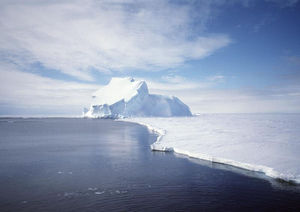PCBs and organochlorine pesticides in Antarctic algae
Context of the study
Although a wide range of Antarctic organisms, like krill, fish, birds, dolphins and seals have been reported to be contaminated by DDTs and PCBs, no data is available on phytoplankton. Determining the contamination of the Antarctic biota will provide information that can help in controlling global pollution.
Content of the study
Antarctic particulate matter (which includes phytoplankton) and zooplankton were sampled and investigated for the presence of organochlorine compounds
Main results of the study
The PCB contamination of oceanic particulate matter is of the same order of magnitude in the Antarctic waters as in the North Sea (600-1200 ng/g dry weight). One would expect Antarctic waters to be less contaminated than the heavily polluted North Sea. This is confirmed when the concentration of PCBs is expressed per volume of sea water: the concentration of PCBs is 7 times higher in the North Sea (8,8 µg/l) than in Antarctica (1,2 µg/l). This leads to the paradoxical consequence that although the Antarctic ecosystem is seven times less poluted, the Antarctic wild life can be as (or even more) contaminated than in the North Sea.
This was confirmed at zooplankton level: the Antarctic zooplankton is equally contaminated as the North Sea zooplankton.The reason for this is that PCBs are insoluble and adsorb to particles (organic matter). Due to the lower productivity in the Antarctic, less particles are available for the PCBs to adsorb on. Therefore, the lower amount of particles (number/l) compensates for the lower PCB concentration (expressed as µg/l). The zooplankton which feeds on this particulate matter will therefore accumulate the same amount of PCBs. Pesticides such as DDT were not detectable or only detected at low concentrations.[1]
